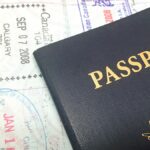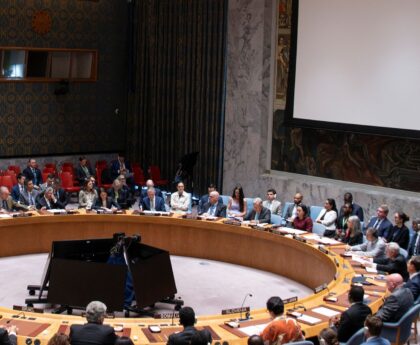It’s been a little less than a decade since Tesla CEO Elon Musk first announced his electric vehicle manufacturer would roll out a fleet of robotaxis across the country. In 2016, the billionaire said they would hit the streets two years later.
Now, in 2025, he’s finally made good on his promise –– albeit at a much smaller scale.

Download the SAN app today to stay up-to-date with Unbiased. Straight Facts™.
Point phone camera here
A decade in the making
On Sunday, June 22, Tesla began offering rides in its autonomous robotaxis for a flat fee of $4.20 in Austin, Texas. While Musk initially envisioned a fleet of more than a million robotaxis this year, Sunday’s rollout featured a much more modest cadre of 10 to 20.
Those vehicles are expected to operate from 6 a.m. to midnight within a limited section of Downtown Austin. Additionally, they will carry a safety driver to mitigate any potential problems.
In a post on X –– also owned by Musk –– the tech mogul wrote, “Super congratulations to the @Tesla_AI software & chip design teams on a successful @Robotaxi launch,” adding, “Culmination of a decade of hard work.”
Texas legislation targets autonomous vehicles
As recently as last week, Texas state lawmakers were trying to get Tesla to push its long-awaited launch back to September. That’s when a new law signed Friday, June 20, by Gov. Greg Abbott will take effect.
According to local media outlet, KVUE, the legislation requires autonomous vehicles to comply with traffic laws, house a recording device, and include a risk management mechanism if the automated driving system breaks. Outside the vehicle, it calls for a “First Responder Interaction Plan” that the state’s Department of Public Safety can follow if a vehicle is involved in an accident.
However, Tesla had been under pressure to get its vehicles on the road quickly, so that it could keep pace with rival Waymo, which is already operating in several cities, including Austin, and recently completed its 10 millionth paid ride.
Musk’s robotaxis differ from Waymo’s in that they largely rely on camera systems and computer vision rather than high-tech sensors, including radar, in the vehicles. Musk believes those sensors are not cost-effective and hold Tesla back from mass-producing robotaxis.
He has also previously asserted, “What will actually work best for the road system is artificial intelligence, digital neural nets and cameras.”
A saving grace for Tesla?
While the robotaxi initiative first emerged around 2016, it wasn’t until October 2024 that a prototype of the vehicle was unveiled. At the time, Musk made ambitious promises about the future of self-driving technology. He said that the cars will transition from supervised full self-driving to fully autonomous, allowing passengers to “fall asleep and wake up at your destination.”
Three months later, Musk told investors during an earnings call that the company would introduce its fleet by mid-June. That was in January, and Tesla’s fourth quarter profits had failed to meet expectations.
Fast forward through the first six months of President Donald Trump’s second term in office, during which Musk played a pivotal and very public role, and the company has continued to perform even worse.
Musk is confident his taxi service will be able to scale quickly though, and rebound the company’s ailing finances. Part of that confidence is pinned on a software update that will be made for existing Tesla owners, allowing them to rent their vehicles out as a cab.
“Instead of having your car sit in the parking lot [at work], your car could be earning money,” Musk said earlier this year.




